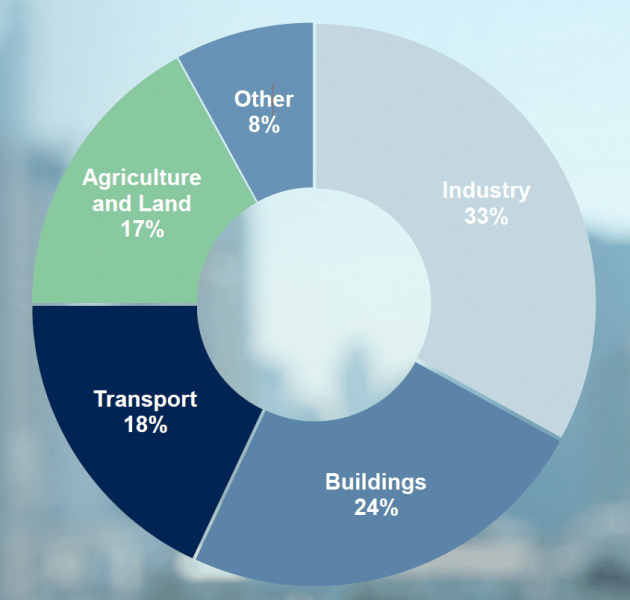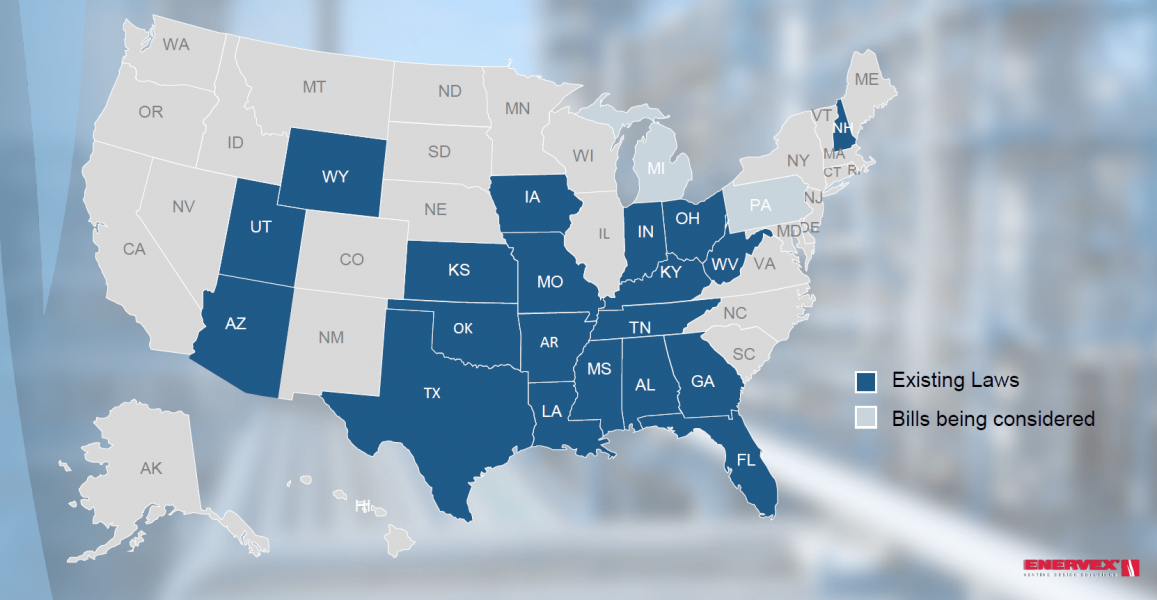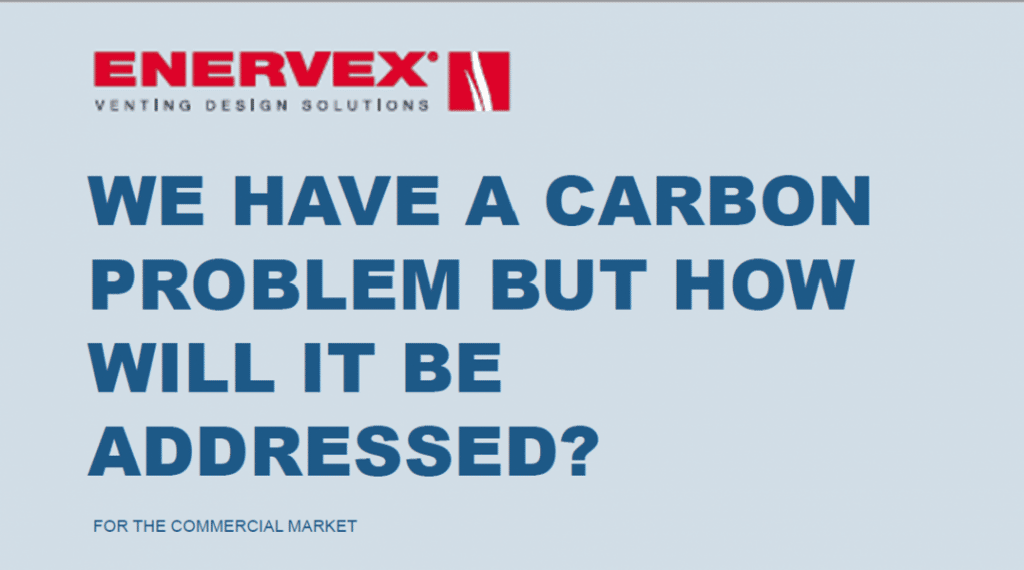
Enervex gave an interesting presentation at their national sales conference in November that provides some perspective on the growing focus on environmental impact. They shared the fact that buildings are responsible for 24% of the world’s CO2 emissions. They noted that many states are beginning to impose regulations on a path to become carbon neutral, or “net zero.” Here are just a few specific examples:
- DC, CA, WA – No natural gas hookups on all buildings after 2027
- DC – By 2026, net zero energy standard construction for new buildings and renovations
- DC – Net zero Energy codes under development
- CA – Ban of sales of gas-fired space heaters and water-heating appliances 2030
- NY – CO2 reductions – 40% by 2030, 80% by 2050
- NY – carbon marketplace to be adopted
The regulatory patchwork becomes even more complicated if your company serves multiple markets. What’s more, many corporate clients are setting their own sustainability (ESG or Environmental, Social and Governance) targets – which may be more strict than state regulations.
While there are efforts to eventually phase out the use of natural gas, most experts are of the opinion this would likely not happen until 2040, at the earliest. This is because renewable sources of energy are intermittent, and a reliable, baseload form of energy like natural gas is needed until other technologies are developed to ensure energy can be supplied whenever needed.*
It is also a fact that most of the electricity generated today in the U.S. still comes from burning fossil fuels. In other words, the carbon footprint of heating and cooling equipment will still be substantial – even if it runs on electricity – until we can produce electricity cleanly on a large scale.

Many states recognize this will be a long, slow transition. So, while they have enacted the carbon reduction legislation outlined above, 20 states have laws in place that prevent local areas from banning natural gas altogether. Several more states are considering similar legislation.
All of this paints a complicated picture for companies working to be more environmentally responsible, but it is equally complicated for our industry – the folks that manufacture, sell and install HVAC equipment.
Enervex appreciates that manufacturers are working on ever more efficient equipment and that companies will move in this direction as current equipment lifecycles expire and capital budgets allow.
Enervex points out that while we often concentrate on new, more efficient systems, there is a great impact that can be made in the area of reducing wasted energy use. Several of their products focus on waste heat recovery and more efficient ventilation. They see huge market potential for these systems, as cost-effective ways for companies to reduce their carbon footprint in the near term. See the links below to their related product lines. Contact UEP’s experts to learn more about bringing these solutions to your clients.
VHS Economizer – Waste Heat to Water (WHW heat exchanger)
MBESx, MBESsv – Modulating Building Exhaust Systems
*Natural Gas Intelligence


